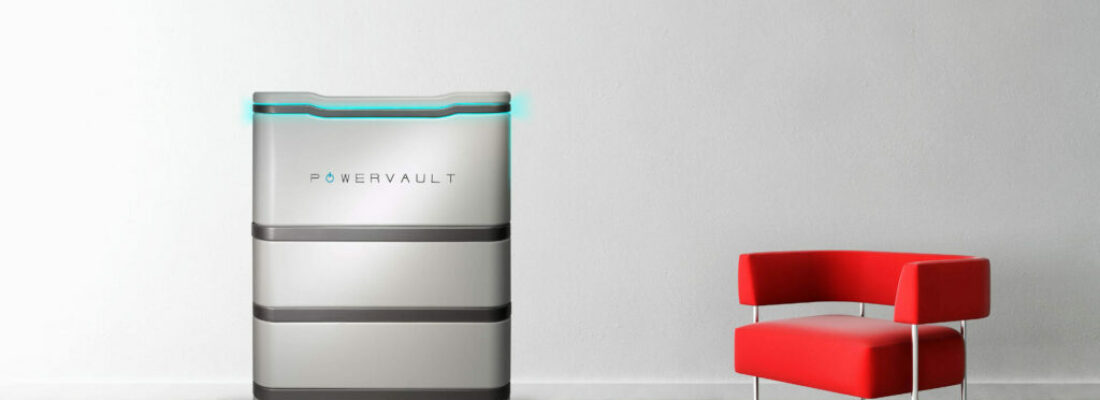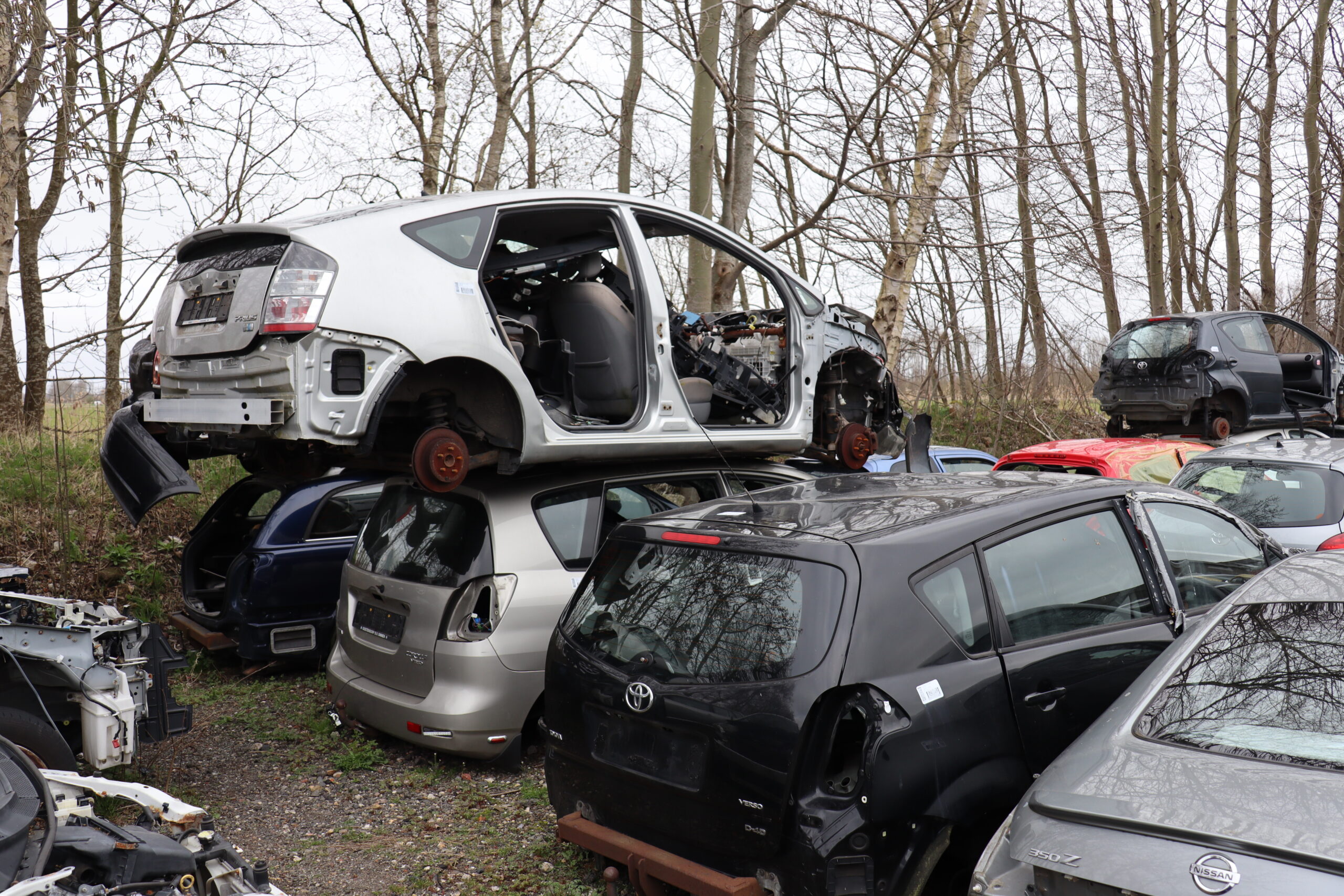Now that the electric car is starting to take off, the question arises as to what we will do with all the old batteries that will be returned. Scientists and companies – around the world and in the Netherlands – are exploring the possibilities of using these as static energy buffers. Green Light lists an overview of several current initiatives.
Tekst Leonard van den Berg
Fotografie Powervault
The electric car is still relatively scarce, so at the moment there is no huge pile of retired batteries. Worldwide, around 55,000 EVs are being discarded this year, according to data from the American company Bloomberg. But that will change quickly. A Bloomberg report predicts enormous worldwide growth of electric cars.
From 2025 onwards, about 3.4 million ‘new old’ battery packs will be launched every year
While in 2017 we counted only 1.1 million, by 2025 this will have increased tenfold to 11 million. And in the same year we will already be sitting on 3.4 million old battery packs that will be looking for a new destination. At that point we will see a rapid increase in the number of EVs: in 2030 we will likely reach 30 million electric models, generating a huge flow of old batteries.
Second Life
But what will we do with all those discarded batteries? Will they have any juice left? According to Bloomberg, a discarded lithium-ion battery from an electric bus or car can serve as an energy storage and delivery medium for at least seven to ten years. This offers many possibilities, as noted by various companies around the world. 4R Energy Corporation, for example, a joint venture between the Japanese companies Nissan and Sumitomo. This company has opened a factory in the Japanese city of Naime to recycle old EV batteries for various purposes. The streets of the coastal town will soon be lit with old batteries from Nissan Leafs. Even more remarkable is that recycled battery packs could also be put back into electric vehicles. In countries such as China (car brand BYD) and the US (Chevrolet, EVgo and Florida Power & Light), old EV batteries are being reused for various purposes. From energy storage to EV charging or energy supply to a data centre.
Powervault
Closer to home we also see many interesting initiatives. In Europe Renault has been working on some innovative solutions. Last year, it joined forces with Powervault and started a test to reuse old EV batteries for home use. Smart batteries – Powervaults –were installed in fifty households already equipped with solar panels to store the energy obtained by the sun. By using old Renault batteries, Powervault saves 30% in costs, so a mass roll-out in the UK beckons.
Smart island
Groupe Renault is also one of the initiators of the first smart island in the world. On the Portuguese island of Porto Santo, a small sister island northeast of Madeira, locally generated renewable solar and wind energy is stored in old Groupe Renault batteries. In addition to charging points for electric cars, the reclaimed energy provides energy to homes and businesses.
Battery packs can serve as a back-up for the power grid, to pitch in during peak hours or even to power households or entire islands
The project at Porto Santo also proves that an electric car battery does not have to be reused to be useful. Brand new battery packs in brand new EVs are also valuable for a balanced energy network. At peak hours, the EVs at Porto Santo (there are round twenty electric Renaults) can contribute energy to the electricity grid. This is called V2G.
Pampus
And there are more islands where discarded EV batteries have proven their usefulness. On Pampus, the fort island in the IJmeer in the Netherlands, they are part of the energy supply. Power generated by solar panels is stored in these batteries for later use. Pampus wants to be 100% sustainable and self-sufficient by 2022. The Alliander power company is responsible for the batteries on the island. According to the energy company, a series of batteries in half of an ocean container can power an entire neighbourhood ‘off-grid’ for one day. Ideal in case of a power failure. For the time being, the batteries on Pampus are still a pilot project, meant to gain knowledge and experience.
The show must go on
The Johan Cruijff Arena in Amsterdam and its surrounding neighbourhood know all too well that discarded batteries can serve as a back-up for an energy network in the event of a power outage. If something goes wrong with the electricity network at a football match or concert, the stadium can fall back on a ‘power’ pack with the equivalent of 280 old Nissan Leaf batteries, which was installed in 2016. An initiative of Nissan, Eaton and The Mobility House, the back-up network replaces a previous system with diesel generators.
The Johan Cruijff Arena in Amsterdam has a power pack for emergency power comparable to 280 old Nissan Leaf batteries
Smart Trolley Grid
The Province of Gelderland is eagerly awaiting the use of 2nd-life EV batteries. Through the Gelderland Energy Agreement – an initiative of Alliander and the Gelderland Nature and Environment Federation and Climate Federation Netherlands – discarded EV batteries will be given a new lease on life. For example, the Arnhem company Time Shift, a second-life specialist in reusing discarded EV batteries, will use batteries to provide energy storage to the Smart Trolley Grid. This is a smart electricity network, consisting of charging points on trolley masts, where the trolleybus can offload its braking energy. Subsequently, electric vehicles can ‘refuel’ with this recovered electricity’.
Tesla
A back-up for the existing energy network during peaks in energy consumption or providing self-sufficiency to households or even an entire island; these are just a few of the applications for used EV batteries. And finally, what about Tesla, one of the pioneers in electric cars? What do the Americans plan on doing with their discarded batteries? The answer is quite surprising: Elon Musk’s company – which is also a big battery producer – says that their discarded batteries would not last for another ten or fifteen years as ‘power pack’ for stadiums or trolley buses. However, in the Californian city of Palo Alto, they are working hard on the large-scale recovery of expensive raw materials from exhausted battery packs. So Tesla will recycle in a ‘closed loop’ in its own Giga factories.
What about the short-term?
These all seem like wonderful plans. But what do these initiatives mean to us now, in the short term? How realistic are they? And what is needed to roll them out on a larger scale in the long term? EV specialist Hector Timmers of ARN warns that we should not have high expectations yet. At least, not in the short term. “At the end of October, the Province of Gelderland issued a report on a feasibility study for the second-use applications of batteries, in the framework of the Gelderland Energy Agreement. This clearly shows that the business case for reusing batteries in a 1 MWh application is not quite economically viable at the moment.” We must be cautious. But Timmers certainly sees opportunities for the future: “If we can reuse data from the Battery Management System (BMS), and if manufacturers of hardware design will take second life applications into account, we will be able to remove many practical obstacles in the future and the recycled battery will serve as an excellent energy buffer.”




